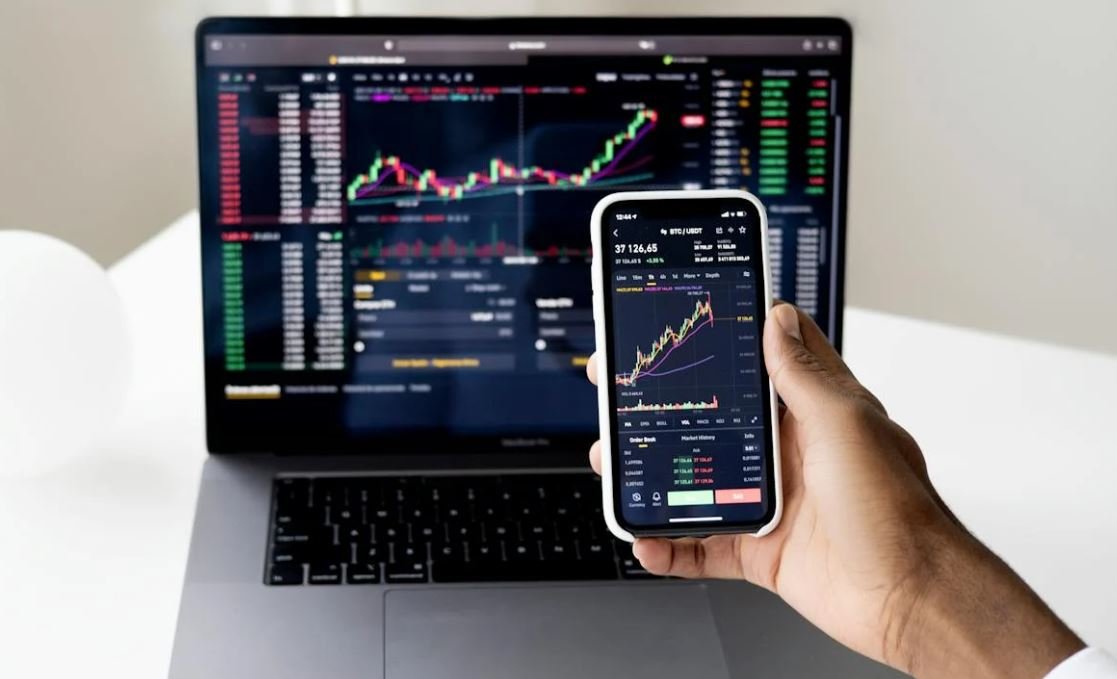What Is a Newsletter?
A newsletter is a regularly distributed publication that is sent to subscribers and provides updates, news, and information on a specific topic or theme. It allows individuals or organizations to connect with their audience, build a relationship, and share valuable content.
Key Takeaways:
- Newsletters are regularly distributed publications.
- They provide updates, news, and information.
- Newsletters help build relationships with an audience.
- They allow for the sharing of valuable content.
Newsletters serve various purposes, such as providing product updates, informing readers about industry trends, sharing educational content, promoting events, or showcasing new arrivals. They can be created by individuals, businesses, organizations, or institutions, and can be delivered through various channels, including email, print, or even digital platforms like websites or blogs.
Newsletters are a powerful medium for engaging with a target audience and driving communication initiatives.
Benefits of Newsletters
Newsletters offer several advantages for both the sender and the recipients. For individuals or organizations creating and sending newsletters:
- They help establish and maintain relationships with subscribers.
- Newsletters can be used to promote new products, services, or events.
- They increase brand awareness and credibility.
- Newsletters can drive traffic to websites, blogs, or social media platforms.
By regularly connecting with subscribers, newsletters help foster loyalty among the target audience.
For recipients, newsletters provide:
- Access to informative and relevant content.
- Updates on the latest industry news and trends.
- Exclusive offers, discounts, or promotions.
- Opportunities for career development and learning.
Newsletter Best Practices
Creating an effective newsletter requires careful planning and attention to detail. Here are some best practices to keep in mind:
- Define your audience and tailor the content to their interests and needs.
- Keep the design clean and visually appealing.
- Include a clear call-to-action in each newsletter.
- Date and personalize the newsletter for a personal touch.
- Segment your subscribers to send targeted and relevant content.
Implementing these best practices can help maximize the impact and success of your newsletters.
Newsletters: By the Numbers
| Statistic | Percentage |
|---|---|
| Number of email users worldwide | 4.1 billion |
| Percentage of marketers who believe email is crucial for business | 80% |
| Average open rate for newsletters | 20% |
As seen in the above table, newsletters remain a popular and effective communication tool with a high level of reach and engagement.
Overall, newsletters are an essential tool for individuals, businesses, and organizations looking to connect with their audience, provide valuable content, and establish lasting relationships. By implementing best practices and staying up-to-date with industry trends, you can create engaging newsletters that drive communication and achieve your goals.
Newsletters vs. Email Blasts
It is important to note the distinction between newsletters and email blasts. While newsletters aim to provide valuable content and build relationships with subscribers, email blasts are generally focused on delivering time-sensitive information or promotional offers to a wide audience.
What’s Your Newsletter Strategy?
Now that you understand the importance and benefits of newsletters, it’s time to develop your own newsletter strategy. Consider your audience, set clear goals, and create valuable content that will engage and resonate with your subscribers.

Common Misconceptions
Newsletter Title
While newsletters are a common form of communication for many organizations and individuals, there are several misconceptions that people often have about them. Let’s debunk some of these misconceptions:
- Newsletters are old-fashioned: Some people believe that newsletters are outdated and that other forms of communication, such as social media or blogs, are more effective. However, newsletters remain a valuable tool for sharing information and engaging with a specific audience.
- Only businesses use newsletters: Although newsletters are commonly associated with businesses and marketing, they can also be utilized by various other groups, such as non-profit organizations, communities, or educational institutions. Newsletters are a versatile medium that can be adapted to different purposes.
- Newsletters are spammy: Many people mistakenly assume that newsletters are just spam emails that clutter their inbox. However, a well-crafted newsletter provides valuable content and offers readers the opportunity to stay updated on topics of interest to them, making it a more targeted and meaningful form of communication.
Creating Engaging Newsletters
Another misconception often heard is that creating engaging newsletters is a difficult and time-consuming task. Let’s address this misconception:
- You need to be a professional designer: While a visually appealing layout can enhance the reader’s experience, creating engaging newsletters doesn’t necessarily require advanced design skills. With the help of user-friendly email marketing platforms, templates, and available resources, even beginners can create attractive newsletters.
- You need to have extensive writing skills: While having strong writing skills is advantageous, newsletters can be engaging even with simple, concise language. Readers value authentic and relevant content, so focusing on delivering valuable information in a clear and understandable manner is more important than complex writing techniques.
- Engaging newsletters require a large budget: It’s common to assume that investing a significant amount of money is necessary for creating engaging newsletters. However, with the availability of affordable or free email marketing tools, along with creativity and strategic planning, it is possible to produce compelling newsletters on a limited budget.
Newsletter Subscription
When it comes to newsletter subscriptions, there are also a few misconceptions that need to be debunked:
- Subscribing means getting spam: Some individuals hesitate to subscribe to newsletters because they fear they will receive an overwhelming amount of unwanted emails. However, reputable organizations provide opt-in subscriptions, where individuals have control over what newsletters they receive, ensuring a more personalized experience.
- Unsubscribing is difficult: Some people believe it is a complicated process to unsubscribe from a newsletter once they no longer want to receive it. However, most newsletters include a simple, one-click unsubscribe option, making it easy and convenient for readers to manage their subscriptions.
- Newsletters are solely promotional: While newsletters may contain promotional content, they can also provide educational material, industry insights, valuable resources, or inspirational stories. Newsletters are a means to build a connection and provide value to the audience, not solely a platform for self-promotion.

Types of Newsletters
There are various types of newsletters that serve different purposes. Here is a breakdown of the most common types:
| Type | Description |
|---|---|
| Company Newsletter | A newsletter created by a company to keep employees informed about important updates, events, and achievements. |
| Email Newsletter | A digital newsletter sent via email to subscribers, typically containing news, offers, or promotions. |
| Industry Newsletter | A newsletter focused on specific industries, sharing trends, insights, and industry-related news. |
| Nonprofit Newsletter | A newsletter designed for nonprofit organizations to communicate their mission, events, and impact to supporters. |
| Education Newsletter | A newsletter tailored for the educational sector, providing updates on new teaching methods, resources, and events. |
Email Newsletter vs. Print Newsletter
When choosing between an email or print newsletter, several factors come into play. Let’s look at their characteristics:
| Characteristics | Email Newsletter | Print Newsletter |
|---|---|---|
| Delivery | Delivered instantly to subscribers’ inboxes. | Physically mailed and may take a few days to reach recipients. |
| Cost | Low cost as it doesn’t require printing or postage. | Higher cost due to printing, paper, and postage expenses. |
| Interactivity | Can include multimedia, links, and interactive elements. | Less interactive but can have tactile appeal. |
| Audience Reach | Can reach a broader audience globally. | May have a limited reach depending on geographic distribution. |
| Environmental Impact | Requires fewer resources, making it more eco-friendly. | Involves paper consumption and potential waste. |
Benefits of Newsletters
Newsletters offer several benefits to businesses and organizations. Here are some notable advantages:
| Benefit | Description |
|---|---|
| Customer Engagement | Newsletters help establish and strengthen relationships with customers, fostering loyalty and increasing engagement. |
| Brand Awareness | Consistent newsletter distribution increases brand recognition and keeps your organization at the forefront of customers’ minds. |
| Traffic Generation | By featuring links to your website and latest content, newsletters drive traffic and encourage further exploration. |
| Credibility Building | Well-researched and informative newsletters establish your expertise in your industry, building trust and credibility. |
| Sales and Conversions | Strategic newsletters with enticing offers or promotions can generate leads, drive conversions, and increase sales. |
Newsletter Content Ideas
Coming up with engaging content for your newsletter can sometimes be a challenge. Here are a few ideas to consider:
| Content Ideas | Description |
|---|---|
| Tips and Tutorials | Share valuable tips, how-to guides, or tutorials related to your industry or niche to provide practical insights. |
| Success Stories | Highlight success stories, case studies, or testimonials from customers or clients who have benefited from your product or service. |
| Exclusive Content | Offer exclusive content or early access to new products, services, or events to create a sense of exclusivity for subscribers. |
| Industry Updates | Keep subscribers informed about the latest trends, news, and advancements in your industry. |
| Curated Resources | Compile a list of helpful articles, tools, or resources related to your niche and provide a valuable resource hub for subscribers. |
Newsletter Design Tips
Designing an appealing newsletter can greatly enhance its impact. Consider these design tips:
| Design Tip | Description |
|---|---|
| Visual Hierarchy | Structure your newsletter layout using visual hierarchy to guide readers’ attention to the most important content. |
| Whitespace Utilization | Use whitespace effectively to create balance, improve readability, and enhance the overall visual appeal of your newsletter. |
| Consistent Branding | Adhere to your brand’s visual identity by using consistent colors, fonts, and imagery in your newsletter design. |
| Responsive Design | Optimize your newsletter design for different devices to ensure easy readability and accessibility for all subscribers. |
| Call-to-Action Placement | Strategically place compelling call-to-action buttons or links to drive engagement and conversions from your newsletter. |
Newsletter Metrics to Track
Measuring the success of your newsletter provides valuable insights. Here are some metrics worth tracking:
| Metric | Description |
|---|---|
| Open Rate | Shows the percentage of subscribers who open your newsletter, indicating the effectiveness of your subject lines. |
| Click-Through Rate (CTR) | Measures the percentage of recipients who click on a link or call-to-action within your newsletter, reflecting engagement. |
| Conversion Rate | Calculates the percentage of subscribers who took a desired action (e.g., made a purchase) after clicking on your newsletter. |
| Unsubscribe Rate | Indicates the percentage of subscribers who opt-out or unsubscribe from your newsletter, highlighting potential issues or audience disinterest. |
| Forward/Share Rate | Tracks how often subscribers forward or share your newsletter, allowing you to gauge content quality and word-of-mouth reach. |
Newsletter Frequency and Timing
Establishing the right frequency and timing for your newsletter distribution is key. Consider the following:
| Factor | Description |
|---|---|
| Frequency | Determine whether a weekly, bi-weekly, monthly, or quarterly newsletter suits your objectives and available resources. |
| Timing | Experiment with different days and times to identify when your subscribers are most likely to engage with your newsletter. |
| Consistency | Stick to a consistent schedule to establish expectations and build trust with your subscribers. |
| Feedback | Monitor subscriber feedback or conduct surveys to gauge satisfaction with the frequency and timing of your newsletter. |
| Industry Norms | Consider industry standards and competition to ensure you’re not overloading or underwhelming your audience with your newsletter frequency. |
Newsletters are a versatile communication tool that enables businesses and organizations to stay connected with their audience, foster engagement, and achieve marketing objectives. Whether it’s disseminating information, sharing updates, or promoting offerings, newsletters remain a strategic asset in driving growth and building relationships.
Newsletter FAQ
Frequently Asked Questions
What is a newsletter?
A newsletter is a regularly distributed publication containing news, information, or updates about a specific topic or organization. It is typically sent to a group of subscribers via email.
How often should I send a newsletter?
The frequency of newsletter distribution depends on your specific goals and the nature of your content. Some newsletters are sent daily, while others are weekly, monthly, or even quarterly. Consider your audience’s preferences and the amount of valuable content you can provide.
What should I include in a newsletter?
A newsletter typically includes updates, articles, promotions, announcements, and upcoming event details related to the topic or organization it represents. You can also include engaging visuals, links to external resources, and interactive elements to enhance the user experience.
How can I grow my newsletter subscriber list?
To grow your newsletter subscriber list, consider implementing various strategies such as opt-in forms on your website, offering incentives like exclusive content or discounts, promoting your newsletter through social media and other marketing channels, and ensuring your content is valuable and engaging to encourage referrals.
How can I make my newsletter more engaging?
To make your newsletter more engaging, focus on creating compelling content that adds value to your subscribers. Use eye-catching visuals, personalize the content, make it easy to skim through with clear headings and subheadings, and encourage interaction through surveys, polls, and social sharing buttons.
How do I measure the success of my newsletter?
You can measure the success of your newsletter by tracking metrics like open rates, click-through rates, bounce rates, conversion rates (if applicable), and subscriber growth. Analyzing these metrics will provide insights into the effectiveness of your content and allow you to make data-driven improvements.
Should I segment my newsletter subscribers?
Segmenting your newsletter subscribers allows you to tailor content to specific audience groups based on their interests, preferences, or demographics. This helps improve relevancy and engagement, leading to higher open and click-through rates. Consider segmenting your list based on factors like purchase history, engagement level, or subscriber behavior.
How can I prevent my newsletter from being marked as spam?
To prevent your newsletter from being marked as spam, make sure to obtain permission from users before adding them to your subscriber list. Avoid using misleading subject lines, provide a clear and easy unsubscribe option, maintain a good reputation with email service providers, and regularly clean your list by removing inactive or unengaged subscribers.
Can I use purchased email lists for my newsletter?
Using purchased email lists for your newsletter is generally not recommended. These lists often have low-quality or outdated email addresses, and sending unsolicited emails may harm your sender reputation and lead to higher spam complaints. It is best to focus on building an organic and engaged subscriber base.
Should I include an unsubscribe link in my newsletter?
Yes, including an unsubscribe link in your newsletter is necessary to comply with email marketing guidelines. It allows recipients to opt-out of future communications if they no longer want to receive your newsletter. Failing to include an unsubscribe option may result in spam complaints and damage your reputation.




